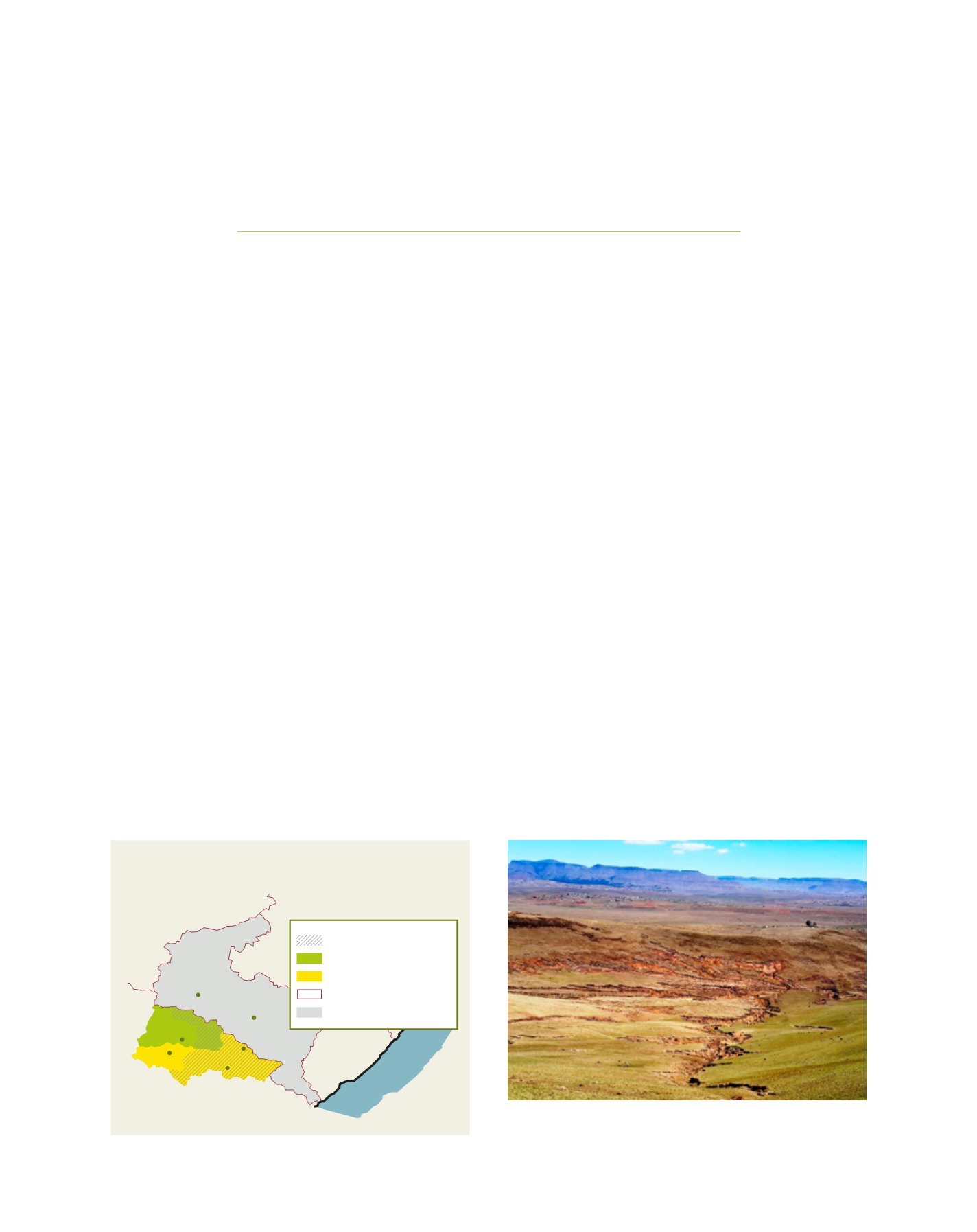

[
] 83
A B
et ter
W
or ld
T
he Mzimvubu catchment in South Africa (SA), in the
province of the Eastern Cape is currently undergoing
a series of infrastructure developments. Ntabelanga
Dam (Phase 1) and Lalini Dam (Phase 2) are both part of
the ongoing Mzimvubu Water Project led by the SA govern-
ments Department of Water and Sanitation (DWS), and on
completion are intended to supply potable water to 730,000
people by 2050 and irrigate about 2,900 ha of land. There
is also a hydropower plant planned at the Lalini Dam site.
In order for these dams to be filled with good quality water
and to reduce sedimentation and other problems which
dramatically reduce the lifespan of the dams, it is essential
to maintain healthy upstream ecosystems as well as opti-
mise all of the ecosystem services they perform.
In a range of natural resource management and restora-
tion programmes, the SA government’s Department of
Environmental Affairs (DEA) Natural Resource Management
(NRM) Programmes is investing in the catchments around the
proposed Ntabelanga and Lalini Dams. The project is under-
pinned through investing in a research programme that will
address the understanding of the management and restoration,
and importantly, the social context of the work, whilst trying
to understand the drivers of the land degradation within the
catchments. This is an area of rural poverty and land degrada-
tion; one in which local people could be given the opportunity
to build a more sustainable future, based on improving natural
resources and building the resilience of ecosystems they depend
on. This makes particular sense given that the Ntabelanga and
Lalini Dams will silt up prematurely if land degradation in the
catchments around them continues. Independent sediment
yield calculations for the Ntabelanga Dam predict that it can
silt up in 30 to 40 years if no sediment management is applied.
1
Restoration efforts in these catchments will extend the
lifespan of the proposed dams. The exact improved life expec-
tancy due to restoration efforts is unknown, but could be as
high as 30%, and depends on the restoration effort invested
and co-operation of the land users and stakeholders in the
catchment. What is certain is that restoration efforts will
reduce the loss of valuable soil, improve water quality, reduce
water treatment costs, and prolong and ensure the liveli-
hoods of upstream and downstream land and water users.
The programmes aims for the intergenerational equity of the
future local residents, who for the first time may inherit a
landscape in better condition than their forebears did.
The land degradation in the catchments of the dams
has attracted initial research investment. Subsequently, a
research investment strategy has been developed by the DEA
NRM to ensure that the key drivers and objectives of the
project are properly researched and that the results are used
to drive the restoration and land management changes that
are required for the system to become more resilient.
Ntabelanga and Lalini
ecological infrastructure project
Mike Powell, Harry Biggs, Michael Braack and the Ntabelanga and Lalini Ecological Infrastructure Project team
Eastern Cape of South Africa showing the
two phases of the NLEIP
LESOTHO
Natal
EASTERN CAPE
Port St Johns
Mount Frere
Qumbu
Ugie
Maclear
Mount Fletcher
INDIAN OCEAN
NLEIP Communal Land
Phase 1 – Ntabelanga
Phase 2 – Lalini
Provincial Borders
Umzimvubu Catchment (T3)
Tsolo
The impact of unsustainable fire and grazing regimes in the Upper
Umzimvubu catchment
Image: DEA RSA
Source: DEA RSA
















